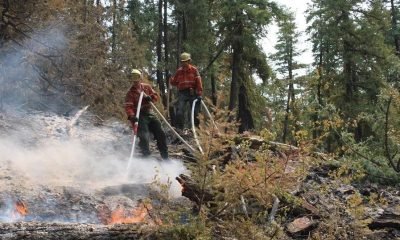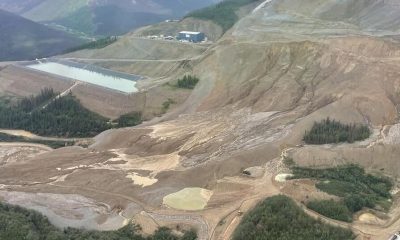Science
Teams in New Mexico gear up for Wednesday landing of Boeing Starliner capsule (photos) – Space.com
Boeing’s Starliner capsule is scheduled to return to Earth on Wednesday (May 25), and teams on the ground have been gearing to welcome the spacecraft home.
Starliner launched May 19 from Cape Canaveral Space Force Station in Florida and successfully docked with the International Space Station (ISS) a day later. The capsule’s uncrewed Orbital Flight Test 2 (OFT-2) mission will wrap up soon, with a planned departure on Wednesday and subsequent landing in the White Sands Missile Range (WSMR) in New Mexico.
To help get ready, teams held a Starliner landing dress rehearsal on May 18 at White Sands Space Harbor, a spaceport that was formerly used as a space shuttle runway and a test site for rocket research. It was also the primary training area used by NASA for space shuttle pilots practicing approaches and landings in the Shuttle Training Aircraft and T-38 Talon aircraft.
Live updates: Boeing Starliner Orbital Flight Test 2 mission to ISS
Related: Boeing’s Starliner OFT-2 test flight for NASA in amazing photos
Weather a significant factor
Karla James works for the Materiel Test Directorate as the Air and Space Branch Test Officer at WSMR.
James noted in an Army news release that she and her colleagues will determine Starliner’s trajectory on the day of the anticipated landing. The WSMR Meteorology Branch will provide weather data, which they’ll gather using weather balloons. Bad weather on Starliner’s departure day could delay the spacecraft’s return or cause the OFT-2 team to shift to a different landing site.
That team has identified five potential landing sites, by the way. Two are at WSMR (the space harbor and a location on Range Road 26), one is on the Dugway Proving Ground in Utah, another is on the Willcox Playa in Arizona and another is at Edwards Air Force Base in California.
The WSMR, Boeing and NASA teams have been preparing for Starliner to potentially come down at either site on the missile range, the Army news release stated. Those teams also have contingency plans that can be executed within a few hours if the capsule ends up touching down earlier than originally anticipated.

Landing sequence
The upcoming landing will be the second of a Starliner capsule at White Sands after a space mission. The first occurred in December 2019 to wrap up the original OFT, which ended prematurely after Starliner failed to meet up with the space station as planned. That touchdown was the first terra-firma landing of a human-rated capsule after a space mission in U.S. history. (NASA’s Apollo spacecraft splashed down in the ocean, as SpaceX’s Dragon crew and cargo capsules do now.)
In November 2019, a Starliner also landed successfully at WSMR during a test of its abort motors, which are designed to rocket a craft to safety in the event of an emergency during launch.
According to Boeing, on OFT-2 landing day, the parachute sequence will begin around 30,000 feet (9 kilometers) above the ground, when Starliner jettisons the forward heat shield that protects the parachutes during reentry.
Two drogue parachutes will begin slowing Starliner down, then detach. The three main parachutes will then deploy and inflate. When Starliner is about 3,000 feet (0.9 km) off the ground, its airbags will inflate. On touchdown, those airbags absorb the initial forces of landing.

Related stories:
Ground recovery operations
On Starliner’s landing day, according to the Army release, a drone will capture aerial views of the ground recovery operation, showing the various vehicles that head toward the capsule after it touches down.
Some of those vehicles will likely belong to the WSMR Garrison Fire Department, which has been trained to take part in the landing and recovery process. The fire department will also be trained in the future on how to deal with a returned Starliner when astronauts are on board — something that could happen before the end of the year, if all continues to go well with OFT-2.
Boeing is required to ensure that Starliner is safe to approach and open after landing. Boeing personnel in protective suits will monitor the levels of toxic hydrazine fuel present around the capsule and will determine where to set up the staging area.
“Upwind or downwind plays a key part in the location,” James said.
Leonard David is author of the book “Moon Rush: The New Space Race,” published by National Geographic in May 2019. A longtime writer for Space.com, David has been reporting on the space industry for more than five decades. Follow us on Twitter @Spacedotcom or on Facebook.
Science
Asteroid Apophis will visit Earth in 2029, and this European satellite will be along for the ride

The European Space Agency is fast-tracking a new mission called Ramses, which will fly to near-Earth asteroid 99942 Apophis and join the space rock in 2029 when it comes very close to our planet — closer even than the region where geosynchronous satellites sit.
Ramses is short for Rapid Apophis Mission for Space Safety and, as its name suggests, is the next phase in humanity’s efforts to learn more about near-Earth asteroids (NEOs) and how we might deflect them should one ever be discovered on a collision course with planet Earth.
In order to launch in time to rendezvous with Apophis in February 2029, scientists at the European Space Agency have been given permission to start planning Ramses even before the multinational space agency officially adopts the mission. The sanctioning and appropriation of funding for the Ramses mission will hopefully take place at ESA’s Ministerial Council meeting (involving representatives from each of ESA’s member states) in November of 2025. To arrive at Apophis in February 2029, launch would have to take place in April 2028, the agency says.
This is a big deal because large asteroids don’t come this close to Earth very often. It is thus scientifically precious that, on April 13, 2029, Apophis will pass within 19,794 miles (31,860 kilometers) of Earth. For comparison, geosynchronous orbit is 22,236 miles (35,786 km) above Earth’s surface. Such close fly-bys by asteroids hundreds of meters across (Apophis is about 1,230 feet, or 375 meters, across) only occur on average once every 5,000 to 10,000 years. Miss this one, and we’ve got a long time to wait for the next.
When Apophis was discovered in 2004, it was for a short time the most dangerous asteroid known, being classified as having the potential to impact with Earth possibly in 2029, 2036, or 2068. Should an asteroid of its size strike Earth, it could gouge out a crater several kilometers across and devastate a country with shock waves, flash heating and earth tremors. If it crashed down in the ocean, it could send a towering tsunami to devastate coastlines in multiple countries.
Over time, as our knowledge of Apophis’ orbit became more refined, however, the risk of impact greatly went down. Radar observations of the asteroid in March of 2021 reduced the uncertainty in Apophis’ orbit from hundreds of kilometers to just a few kilometers, finally removing any lingering worries about an impact — at least for the next 100 years. (Beyond 100 years, asteroid orbits can become too unpredictable to plot with any accuracy, but there’s currently no suggestion that an impact will occur after 100 years.) So, Earth is expected to be perfectly safe in 2029 when Apophis comes through. Still, scientists want to see how Apophis responds by coming so close to Earth and entering our planet’s gravitational field.
“There is still so much we have yet to learn about asteroids but, until now, we have had to travel deep into the solar system to study them and perform experiments ourselves to interact with their surface,” said Patrick Michel, who is the Director of Research at CNRS at Observatoire de la Côte d’Azur in Nice, France, in a statement. “Nature is bringing one to us and conducting the experiment itself. All we need to do is watch as Apophis is stretched and squeezed by strong tidal forces that may trigger landslides and other disturbances and reveal new material from beneath the surface.”
By arriving at Apophis before the asteroid’s close encounter with Earth, and sticking with it throughout the flyby and beyond, Ramses will be in prime position to conduct before-and-after surveys to see how Apophis reacts to Earth. By looking for disturbances Earth’s gravitational tidal forces trigger on the asteroid’s surface, Ramses will be able to learn about Apophis’ internal structure, density, porosity and composition, all of which are characteristics that we would need to first understand before considering how best to deflect a similar asteroid were one ever found to be on a collision course with our world.
Besides assisting in protecting Earth, learning about Apophis will give scientists further insights into how similar asteroids formed in the early solar system, and, in the process, how planets (including Earth) formed out of the same material.
One way we already know Earth will affect Apophis is by changing its orbit. Currently, Apophis is categorized as an Aten-type asteroid, which is what we call the class of near-Earth objects that have a shorter orbit around the sun than Earth does. Apophis currently gets as far as 0.92 astronomical units (137.6 million km, or 85.5 million miles) from the sun. However, our planet will give Apophis a gravitational nudge that will enlarge its orbit to 1.1 astronomical units (164.6 million km, or 102 million miles), such that its orbital period becomes longer than Earth’s.
It will then be classed as an Apollo-type asteroid.
Ramses won’t be alone in tracking Apophis. NASA has repurposed their OSIRIS-REx mission, which returned a sample from another near-Earth asteroid, 101955 Bennu, in 2023. However, the spacecraft, renamed OSIRIS-APEX (Apophis Explorer), won’t arrive at the asteroid until April 23, 2029, ten days after the close encounter with Earth. OSIRIS-APEX will initially perform a flyby of Apophis at a distance of about 2,500 miles (4,000 km) from the object, then return in June that year to settle into orbit around Apophis for an 18-month mission.
Related Stories:
Furthermore, the European Space Agency still plans on launching its Hera spacecraft in October 2024 to follow-up on the DART mission to the double asteroid Didymos and Dimorphos. DART impacted the latter in a test of kinetic impactor capabilities for potentially changing a hazardous asteroid’s orbit around our planet. Hera will survey the binary asteroid system and observe the crater made by DART’s sacrifice to gain a better understanding of Dimorphos’ structure and composition post-impact, so that we can place the results in context.
The more near-Earth asteroids like Dimorphos and Apophis that we study, the greater that context becomes. Perhaps, one day, the understanding that we have gained from these missions will indeed save our planet.

Science
McMaster Astronomy grad student takes a star turn in Killarney Provincial Park
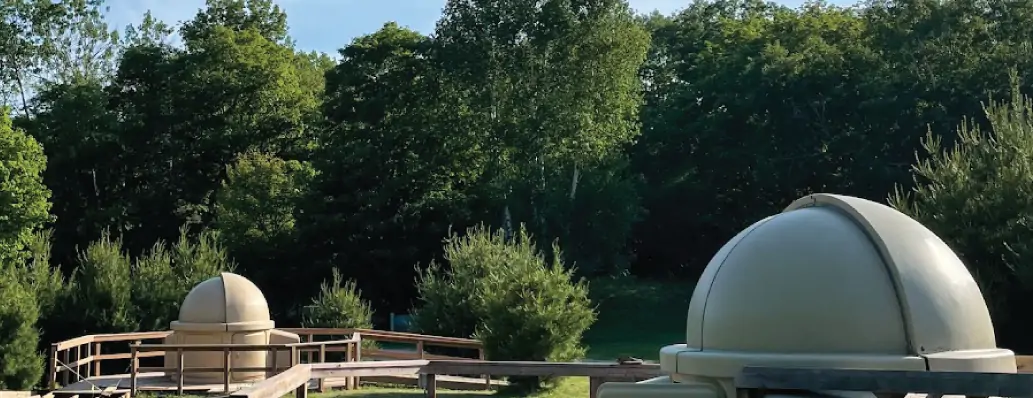
Astronomy PhD candidate Veronika Dornan served as the astronomer in residence at Killarney Provincial Park. She’ll be back again in October when the nights are longer (and bug free). Dornan has delivered dozens of talks and shows at the W.J. McCallion Planetarium and in the community. (Photos by Veronika Dornan)
BY Jay Robb, Faculty of Science
July 16, 2024
Veronika Dornan followed up the April 8 total solar eclipse with another awe-inspiring celestial moment.
This time, the astronomy PhD candidate wasn’t cheering alongside thousands of people at McMaster — she was alone with a telescope in the heart of Killarney Provincial Park just before midnight.
Dornan had the park’s telescope pointed at one of the hundreds of globular star clusters that make up the Milky Way. She was seeing light from thousands of stars that had travelled more than 10,000 years to reach the Earth.
This time there was no cheering: All she could say was a quiet “wow”.
Dornan drove five hours north to spend a week at Killarney Park as the astronomer in residence. part of an outreach program run by the park in collaboration with the Allan I. Carswell Observatory at York University.
Dornan applied because the program combines her two favourite things — astronomy and the great outdoors. While she’s a lifelong camper, hiker and canoeist, it was her first trip to Killarney.
Bruce Waters, who’s taught astronomy to the public since 1981 and co-founded Stars over Killarney, warned Dornan that once she went to the park, she wouldn’t want to go anywhere else.
The park lived up to the hype. Everywhere she looked was like a painting, something “a certain Group of Seven had already thought many times over.”
She spent her days hiking the Granite Ridge, Crack and Chikanishing trails and kayaking on George Lake. At night, she went stargazing with campers — or at least tried to. The weather didn’t cooperate most evenings — instead of looking through the park’s two domed telescopes, Dornan improvised and gave talks in the amphitheatre beneath cloudy skies.
Dornan has delivered dozens of talks over the years in McMaster’s W.J. McCallion Planetarium and out in the community, but “it’s a bit more complicated when you’re talking about the stars while at the same time fighting for your life against swarms of bugs.”
When the campers called it a night and the clouds parted, Dornan spent hours observing the stars. “I seriously messed up my sleep schedule.”
She also gave astrophotography a try during her residency, capturing images of the Ring Nebula and the Great Hercules Cluster.
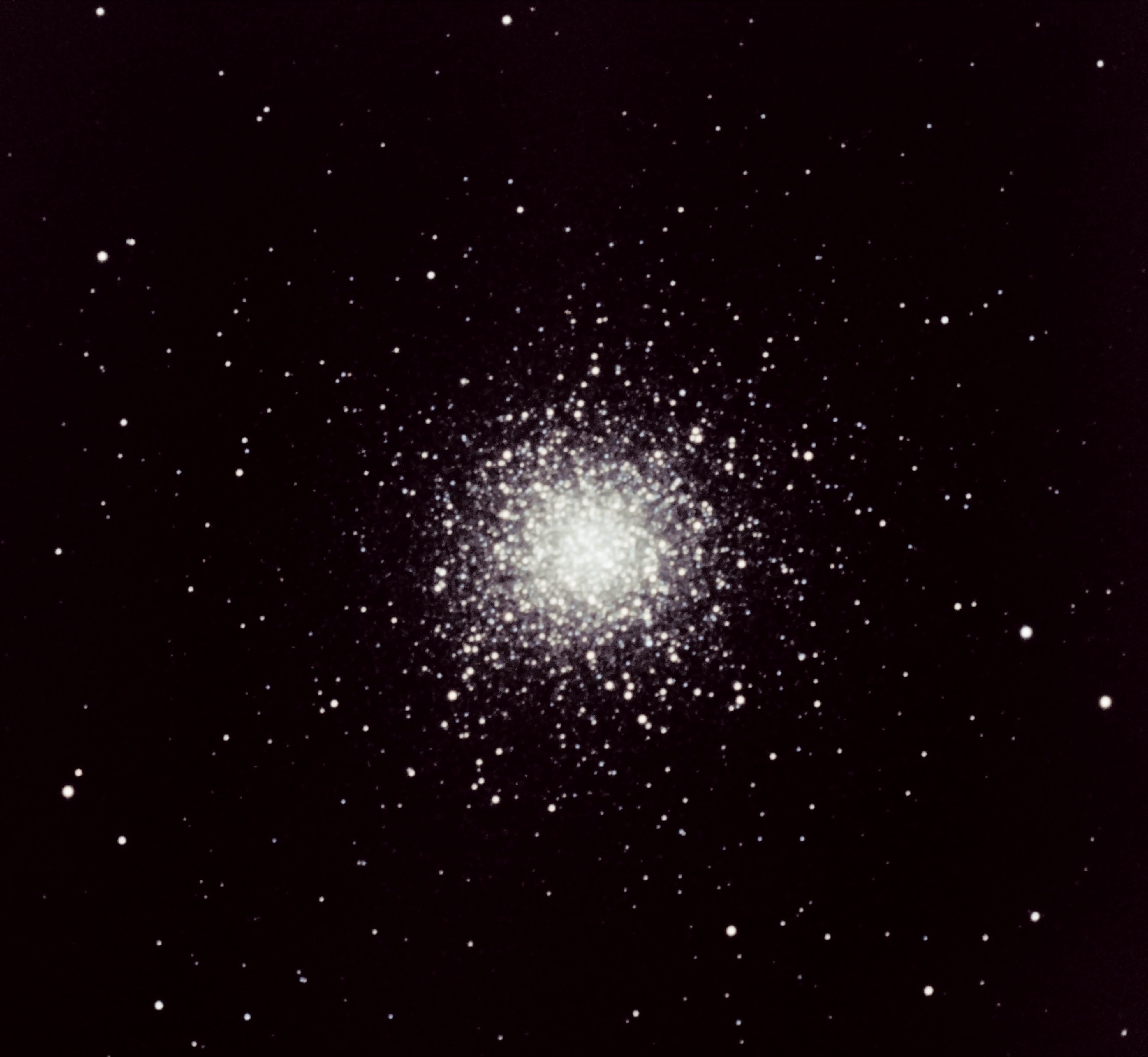
“People assume astronomers take their own photos. I needed quite a lot of guidance for how to take the images. It took a while to fiddle with the image properties, but I got my images.”
Dornan’s been invited back for another week-long residency in bug-free October, when longer nights offer more opportunities to explore and photograph the final frontier.
She’s aiming to defend her PhD thesis early next summer, then build a career that continues to combine research and outreach.
“Research leads to new discoveries which gives you exciting things to talk about. And if you’re not connecting with the public then what’s the point of doing research?”

Science
Where in Vancouver to see the ‘best meteor shower of the year’
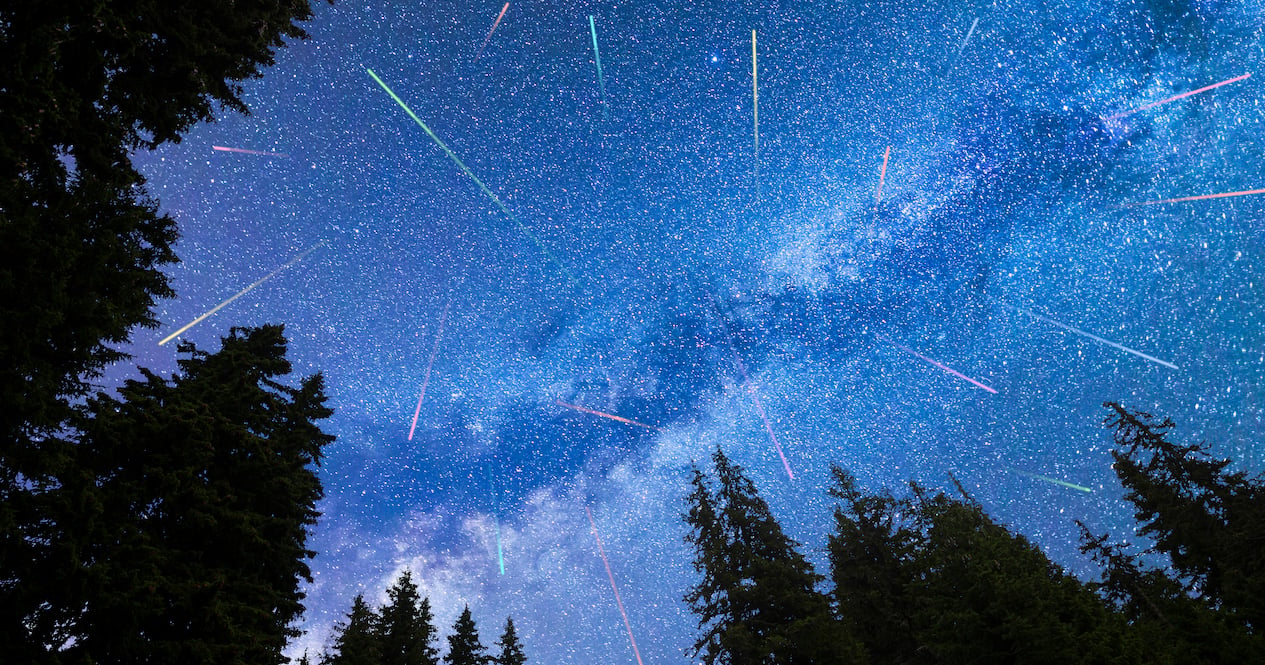
Eyes to the skies, Vancouver, because between now and September 1st, stargazers can witness the ‘best meteor shower of the year’ according to NASA.
Known for its “long wakes of light and colour,” the Perseid Meteor Shower will peak on August 12th, 2024 – so consider this list a great place to start if you’re in search of a prime stargazing spots!
Grab your lawn chairs and blankets, and seek as little light pollution as possible. Here are some ideal stargazing spots to check out in and around Vancouver this summer.
Recent Posts:
This island with clear waters has one of the prettiest towns in BC
10 beautiful lake towns to visit in BC this summer
Wreck Beach
If you’re willing to brave the stairs and the regulars, it doesn’t get much better than Wreck Beach for watching the skies – for both sunsets and stargazing. The west-facing views practically eliminate immediate distractions from the city lights.
Spanish Banks Park
Spanish Banks is the perfect mixture of convenience and quality. Its location offers unobstructed views of the skies above, and it’s far enough away from downtown to mitigate some of the light pollution.
Burnaby Mountain Park
If it’s good enough for a university observatory, it’s good enough for us. Pretty much anywhere on Burnaby Mountain will offer tremendous viewpoints, but the higher you get the better (safely).
Porteau Cove
A short drive from Vancouver gets you incredible views of the Howe Sound from directly on the water. And naturally, its distance from any nearby community makes it a prime spot for stargazing.
Cypress Mountain
In addition to having one of the best viewpoints in Vancouver period, Cypress Mountain (and the road up to it) is also a great place to watch the sky. For a double-whammy, we say that you come around sunset, then hang out while the sky gets dark. Sure, it might take a few hours, but the view is worth it.
So there you have it, stargazers! Get ready to witness a dazzling show this summer.

-

 News23 hours ago
News23 hours agoStatistics Canada says retail sales down 0.3% at $65.7B in June
-

 News17 hours ago
News17 hours agoS&P/TSX composite up nearly 250 points, U.S. stock markets also higher
-

 News19 hours ago
News19 hours agoB.C. crews move to ‘mop up’ stage on many wildfires, drought persists in the north
-

 News16 hours ago
News16 hours agoNelly Korda regains dominant form to lead Women’s British Open by 3 shots at the home of golf
-

 News16 hours ago
News16 hours agoFormer MMA fighter Ronda Rousey apologizes for posting Sandy Hook conspiracy online 11 years ago
-

 News18 hours ago
News18 hours agoRight to enjoy property doesn’t trump freedom of expression: ‘Freedom Convoy’ defence
-

 News21 hours ago
News21 hours agoBrother-in-law of man allegedly swarmed by teens says family reeling from loss
-

 News18 hours ago
News18 hours agoYukon prepares for busy, expensive few months at site of ore slide before freeze-up










